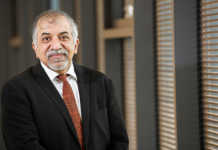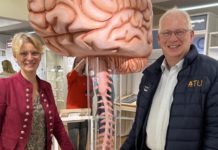Galway has been chosen to house Ireland’s new state of the art European supercomputer.
Ireland is one of five successful countries, along with Germany, Hungary, Greece and Poland, chosen to operate the next generation of European High Performance Computing.
The new EuroHPC supercomputer will be houses at NUI Galway’s Irish Centre for High-End Computing.
When installed, it will be around 25 times more powerful than the current national supercomputer Kay, providing a powerful tool for scientific research and data modelling.
The announcement of EU funding is the first step in a process which will be completed subject to national co-funding arrangements.
President of NUI Galway Professor Ciarán Ó hÓgartaigh said, “The key benefit of a super-computing technology of this excellence is its capacity to model complexity and to radically expand our research opportunities.”
“Our core values at NUI Galway include openness and respect and computing infrastructure of this capacity will be a significant asset in that regard as it futureproofs our approach to research”.
“It also fits with so many aspects of our research strategy, using data to support research and policy-making in the environment, marine, healthcare, and in supporting a good society.”
EuroHPC supercomputers will be available to serve a wide range of European users, including the scientific community, industry and the public sector.
They will be used to power a wide range of areas, from designing medicines and new materials to fighting climate change; they will advance science and boost the innovation potential of enterprises.
Prof J-C Desplat of the ICHEC enthused that Ireland’s computer will enable the “next generation of data-centric techniques”, which will embed machine learning in mainstream science models.
Prof Jim Livesey, Vice President Research and Innovation, NUI Galway, said, “The key feature of machine of this nature is its capacity to model complexity.”
“As weather patterns change, as the future of distributed energy networks change, as we attempt to predict food supply needs of the future, we need a totally new kind of computing capacity to support our endeavours in these areas for the public good.”











